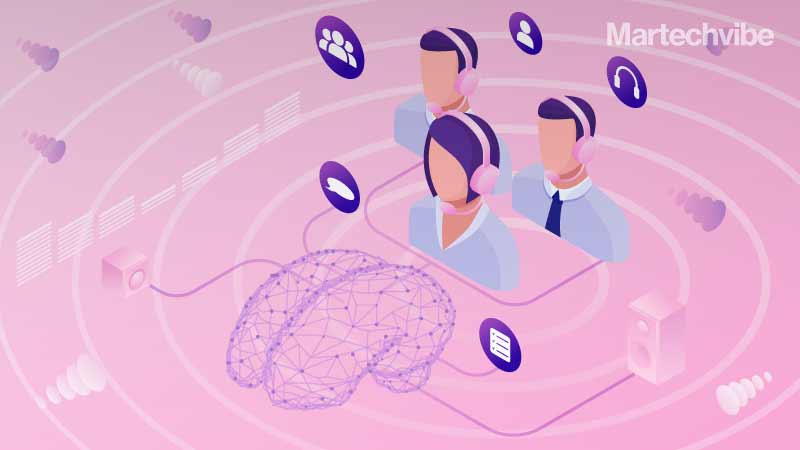Leave Post Call Analysis To AI
Ninety minutes of wait time is no joke. I had called the airline multiple times regarding my refund status for a cancelled flight. But when I did manage to connect to an agent, he didn’t know my situation and what the management had decided about refunds. Meanwhile, the situation at the airline contact centre was […]
Topics

Ninety minutes of wait time is no joke. I had called the airline multiple times regarding my refund status for a cancelled flight. But when I did manage to connect to an agent, he didn’t know my situation and what the management had decided about refunds.
Meanwhile, the situation at the airline contact centre was chaotic. With phones buzzing all the time, agents were handling irked customers one after the other without any clear strategy on how to solve their queries. The teams were neither equipped to handle the new type of customer queries nor the resources to handle the massive surge in call volume. As a result, call resolutions almost dropped to zero in many companies.
strategy on how to solve their queries. The teams were neither equipped to handle the new type of customer queries nor the resources to handle the massive surge in call volume. As a result, call resolutions almost dropped to zero in many companies.
While the airline and eCommerce platforms struggled to keep up, the retail customer service calls increased by 69 per cent due to the jump in online sales, reported Results CX. Although the pandemic-led chaos has simmered down, and customers are not as rattled as they were last year, experts believe it is still essential to learn and comprehend call conversations. Why?
In 1885, a concept called the forgetting curve emerged. A revolutionary research project demonstrated that there could be a loss of memory unless the information is reinforced. In a month, an employee can have forgotten 79 per cent of his customer conversations. Being prepared for worst-case scenarios, and strengthening the contact team’s skills and ability to handle calls successfully is crucial today.
Customer service conversations have also become an ultimate first-party data source for marketers. They can listen to the call recordings and identify patterns on when a conversion happens, when they don’t, and create appropriate marketing strategies. But the major challenge they face is the modern problem of too much data. Unequipped to handle the analysis with traditional strategies, many have begun investing in Conversation Intelligence (CI) tools like AI-driven post-call analysis, offered by vendors such as Vonage.
Also Read: Invest in the Right Communication API Tools
Understanding CI
With CI, contact teams can react to customer conversations in real-time, record and transcribe calls, enable speech recognition, and analyse the exchanges for actionable insights. These insights are then manually analysed as feedback by the team, and it helps them have better quality sales and service strategies.
Customer call service can dramatically improve, provided the team can predict the direction and outcome of a conversation in the beginning. Traditionally, ready responses and line of actions were mandatory and prepared ahead of time but with the advancements in technology and customer expectations, speedy insights, even into the most unique customer situations, are critical.
Allowing personalised engagements, AI-powered CI can not only build a brand reputation but by imitating tested conversation techniques for strategic business operation decisions, data insights can also help increase revenue.
Also Read: Why is Unified Communications becoming Critical?
AI-driven post call analysis
Becoming pervasive across several industries, AI-driven post call analysis is a popular real-time intelligence tool. It is empowering brands by helping the contact team develop behaviour patterns through frequent intelligence, and repeated best practices. Making data-driven decisions more accurate and faster, AI post call analysis can easily scrutinise the volumes of call recordings, detect intent and literary patterns, and provide actionable insights.
For instance, a speech analytics tool can analyse recorded calls, identify words and phrases based on an existing library, and detect trends and audio patterns. When a voice inflection goes beyond a threshold level indicating stress or aggression, it produces data insights and identifies indicators for agents to understand when and why customers get angry. The tool captures data points from previous call history, nature of the concern as well. As a result, agents are better prepared to pivot from negative conversation paths and be capable of satisfying customers and reducing churn rate.
Another method used by AI tools for post-call analysis is by converting data into the smallest unit of speech, phonemes. Phoneme pattern matching is performed across words, phrases, proper names, slang, non-standard grammar, and code words too. Service agents can then scour through a large organised volume of recorded audio on easy-to-use dashboards with contextual reference.
While CI is paving the way for greater sales and customer satisfaction, it is also providing room for more sophisticated tools to enter the market and improve customer service performances. With the status of a holy grail for marketers and customer service departments, AI is responsible for stronger customer relationships and steady business growth.
Looks like CI is the only tool capable of exceeding expectations. If the airline had inculcated a post call analysis tool, the angry customer might have had a more productive conversation with the airline agent who would have been equipped with all the necessary data insights.






